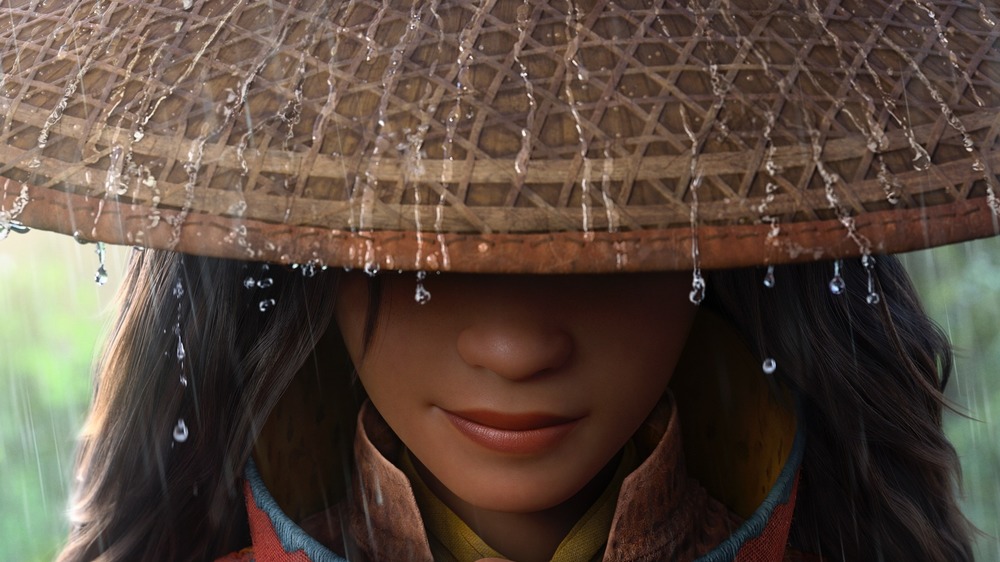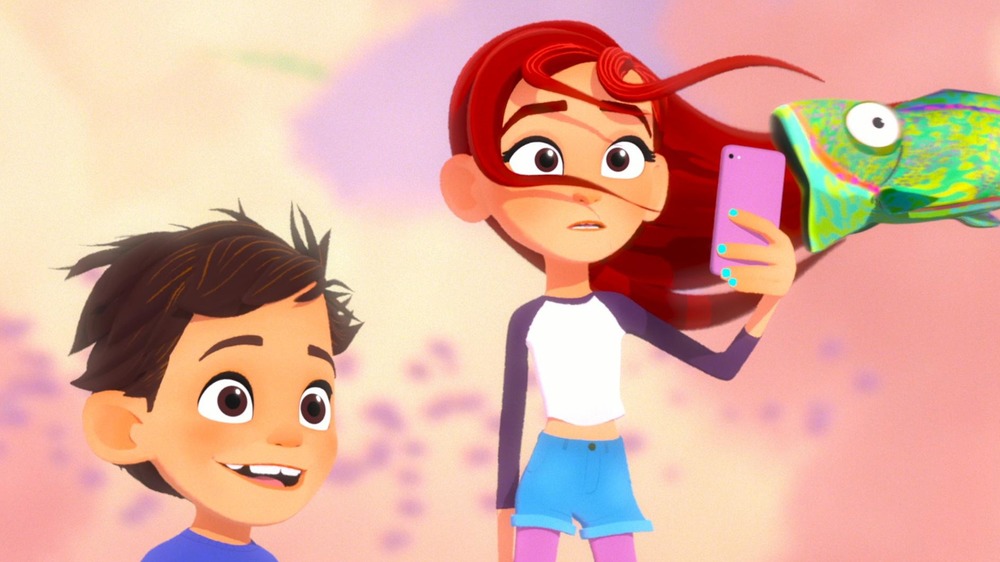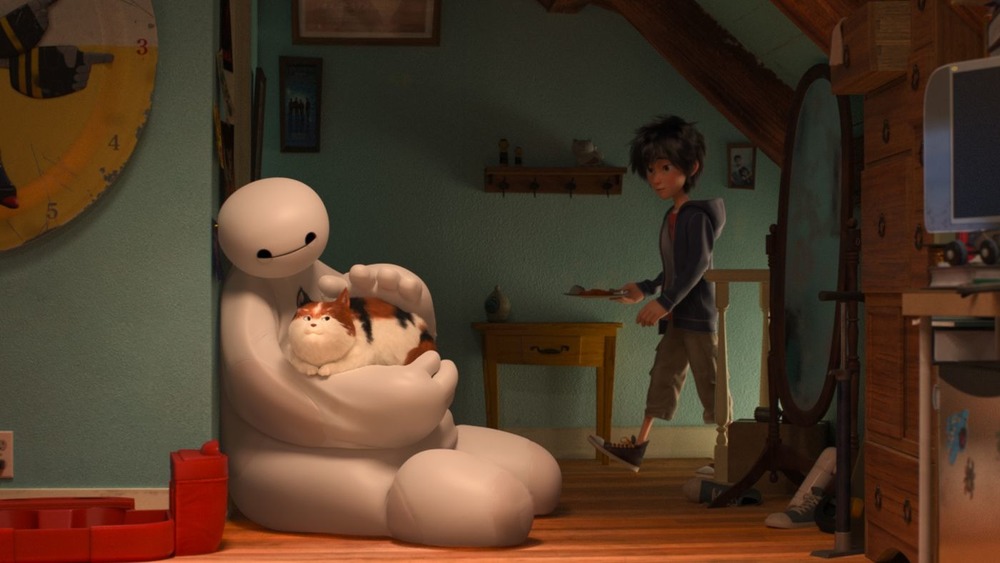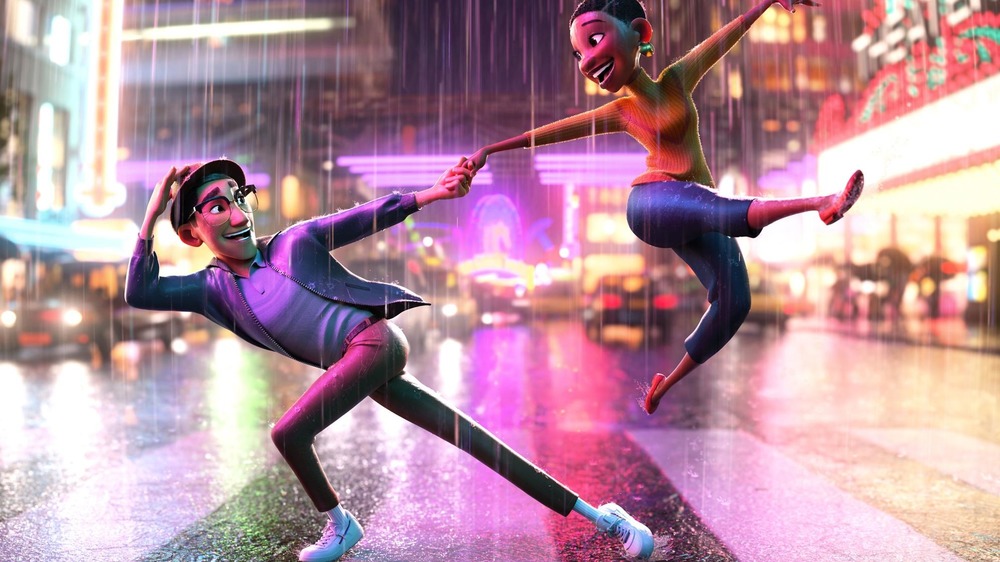What Everyone Gets Wrong About Disney's Animated Movies - Exclusive
Zach Parrish may not be a household name, but you've definitely seen his work. Over the past decade, Parrish has worked as an animator at Disney, working on modern classics like Tangled, Moana, and Zootopia. He was the animation supervisor on Big Hero 6, and has directed two shorts for the company: Puddles and Us Again, which can be seen ahead of the Mouse House's latest animated feature Raya and the Last Dragon, for which Parrish also provided character animation.
Us Again is full of Disney's trademark charm, telling a dance-driven story about an older couple who rediscover their youthful enthusiasm, as well as their love for each other, during a magical rainstorm. Like Disney's early shorts, Us Again combines music with motion to tell a unique, heartfelt story. And like the studio's more modern efforts, the short features state-of-the-art computer animation that pushed Us Again's animators to their limits.
All of this is to say that Parrish knows exactly how Disney works — and, just as importantly, how it doesn't. After all, people have some pretty big misconceptions about Walt Disney and his legacy. Ahead of Us Again's worldwide debut, Parrish took a few minutes to talk with Looper about what people get wrong about the biggest animation studio in the world. What he has to say just might surprise you.
Disney animated projects aren't all business — they're labors of love
Everyone knows that Disney is big business. In addition to traditional Disney properties, the company owns both Marvel and Lucasfilm — and paid a cumulative total of $8 billion for the privilege. It doesn't just make movies, either. Its iconic characters help draw people to theme parks, live on in television spin-offs, and can be found on practically every type of merchandise imaginable.
Given all that, you might think that character, story, and theme aren't as important to Disney as a movie's marketability and potential profit. Not so, according to Parrish. "A lot of people think that the stories that are told by Disney are made by some corporate head somewhere that they think [are] going to play well in some way," Parrish says, "and that's definitely not true. I think the films that we get to make are honest and genuine, and they come from a lot of different places."
Yes, executives get involved. Yes, decisions are made based on marketing, media tie-ins, and potential returns. However, Parrish notes, those aren't necessarily the driving factors. At Disney, an animated film — whether it's a short or a feature — is a collaboration between many different departments, most of which are headed by gifted storytellers.
"They're very collaborative, but they're collaborative within our studio and consultants and things like that," Parrish says. "They're always passionate stories from the filmmakers themselves and come from a very earnest place from the people who get to work on them."
At Disney, playing it safe doesn't always pay off
Similarly, at this point, you might expect that Disney has refined its filmmaking process down to a formula — and yes, Disney's big animated features do have a number of recurring tropes, including glamorous princesses, spunky animal sidekicks, and big, blockbuster musical numbers. And yet, Parrish says that Disney's higher-ups actually encourage filmmakers to innovate. "They are interested in entertaining people and creating new ways of storytelling and investing in new technologies, new leadership, and new voices," he says.
You can see that in Disney animation's latest output. Big Hero 6, Zootopia, and Wreck-It Ralph aren't fairy tales, but are instead more modern stories that establish bold, creative new worlds. The princesses in Frozen and Raya and the Last Dragon are a far cry from Disney's old-school damsels in distress, and all of these movies feature breathtaking animation fueled by the best technology at Disney's disposal.
That desire to push boundaries is one of the main reasons why Disney continues to support animated shorts, even though feature films are where the big money is. "One of the things Jen [Leer] said to me even when I came on, when she told me that I was getting this opportunity was, 'We hope you will challenge our process. We hope you will challenge how we make things,'" Parrish says. "It's an opportunity to show that Disney has multiple points of view and is passionate about storytelling."
In the case of Us Again, that meant expanding the scope of what a six-minute short is capable of on a technical level. "We have a ton of sets," Parrish says. "We have crowds, we have cars, we have rain, we have splashes, we have a carnival, we have transforming characters in cloth — wet cloth in the rain." It also meant coming up with a new workflow to accommodate Us Again's story, in which dance, music, and narrative are completely intertwined. "Trying to figure out who goes first in that was a learning process and something we hadn't quite worked out before," Parrish says.
Yes, Disney's animators do get some real-world help
There's no doubt that Disney employs some of the very best animators on the planet, but despite what you may think, they don't create everything that you see in their movies from scratch. When they need some extra help, they'll use it. Sometimes, that means putting actors in motion-capture suits to gather reference data. For more complicated scenes, like fights or musical numbers, Disney will hire choreographers, who'll block out the action before the animators get to work, much like in a live-action movie.
"We have fight choreographers on Big Hero 6 and some of our other films. We've definitely had choreographers on our Broadway numbers — more theatrical numbers and things like that. We had choreographers on Moana," Parrish notes.
The same goes for Us Again. Keone and Mari Madrid — a husband-and-wife pair who previously collaborated with the likes of Justin Bieber and BTS, and have worked on shows like So You Think You Can Dance and Dancing with the Stars — choreographed Us Again's elaborate dance sequences. Even then, though, Disney's animators don't just capture footage of real-life performers and import their moves directly into the film. Sometimes, the Madrids weren't facing the right direction given the position of the camera in the scene. At others, shots benefitted from more exaggerated motions. "We talked about all the opportunities where we could break it — where we could jump higher, where we could move faster, where we could slow some stuff down, where we could add an extra spin, or what have you," Parrish shares.
Ultimately, the goal was to capture the spirit of Keone and Mari's dance moves while still taking advantage of animation's unique gifts. "They're amazing storytellers, but they're also incredibly emotional in the way that they interact," Parrish says. "It's a very specific movement style that I loved because their style of dance feels like it blends old styles of dance and modern styles of dance into one, which thematically was perfect."
Us Again is currently screening in front of theatrical showings of Raya and the Last Dragon. It will arrive on Disney+ in June.



